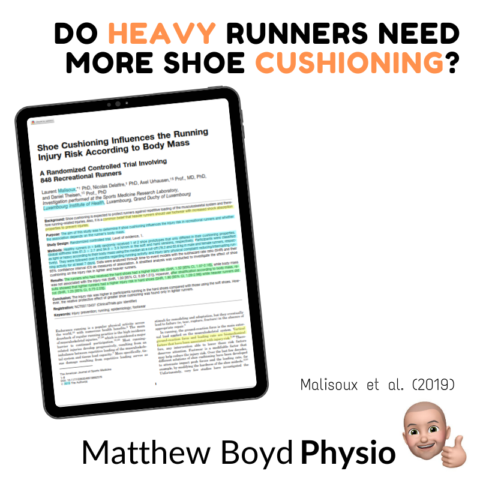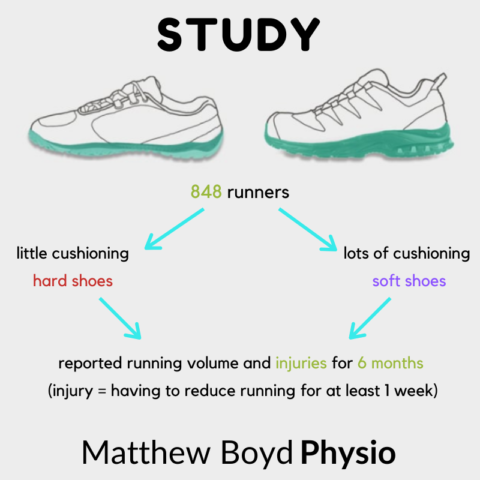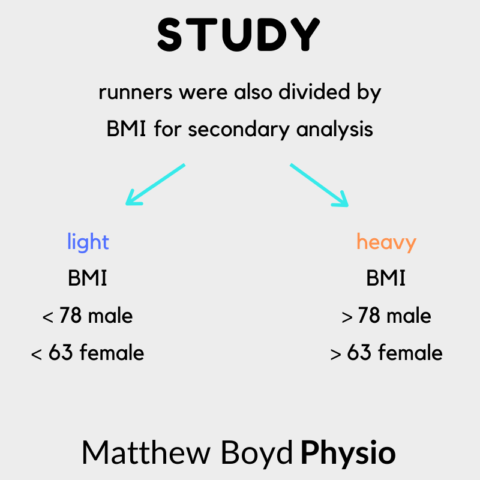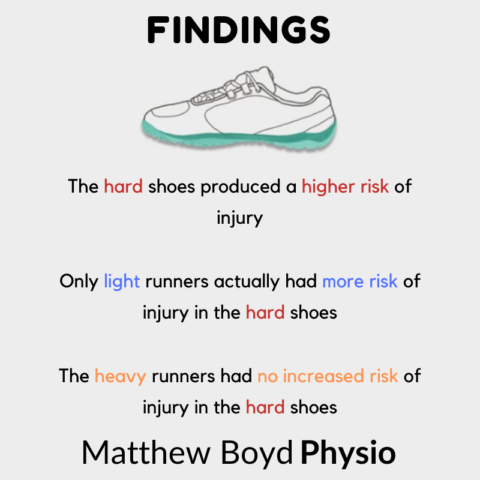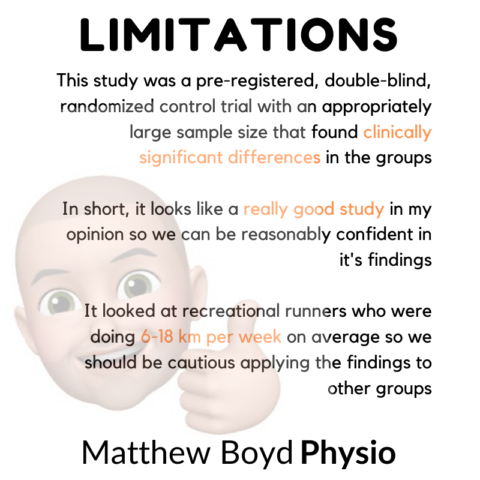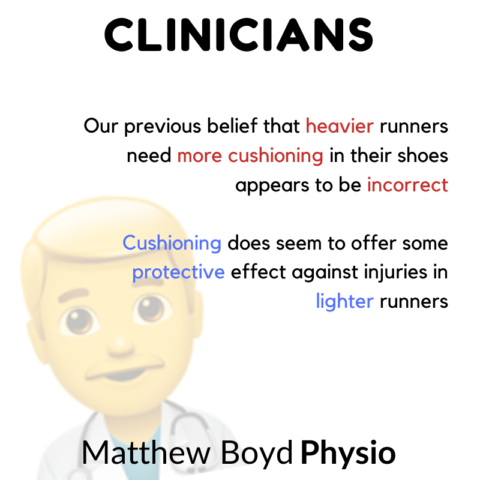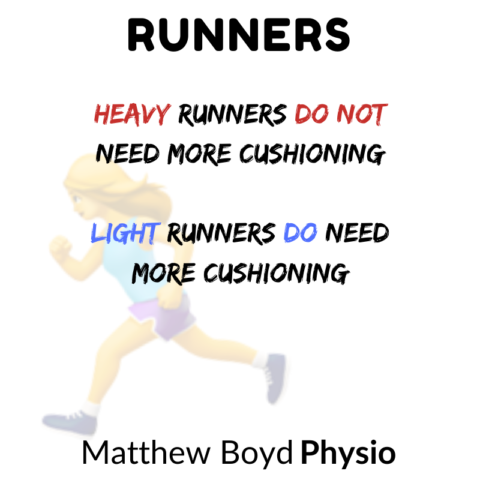Heavy runners need more shoe cushioning.
That has been the shoe prescription mantra from the physio clinic through the to running shoe retailer and all the way in to your local running club since time immemorial. It just makes such intuitive sense right? Heavier runners have more mass hitting the ground each foot strike so they must need more shoe cushioning in order to absorb that higher impact. Fact.
Well, maybe. There wasn’t really any proof of this concept so some researchers from the Luxembourg Institute of Health derided to look into it. As is often the case, our long-held “common sense” beliefs didn’t stand up to rigorous scientific inquiry.
Study
- Randomized control trial of 848 Runners
- 1 group received shoes with lots of cushioning (soft shoes)
- 1 group received shoes with little cushioning (hard shoes)
- Runners reported running volume and injuries for 6 months (injury = having to reduce running for at least 1 week)
- Runners were also divided by BMI for secondary analysis
- “light” (BMI < 78 male or 63 female)
- “heavy” (BMI > 78 male or 63 female)
Findings
- The hard shoes produced a higher risk of injury (SHR 1.5 = got injured 1.5 times as often)
- Only “light” runners actually had more risk of injury in the hard shoes (SHR 1.8 = got injured 1.8 times as often)
- The “heavy” runners had no increased risk of injury in hard shoes (SHR 1.2 = got injured same amount as others)
Limitations
- This study was a pre-registered, double-blind, randomized control trial with an appropriately large sample size that found clinically significant differences in the groups
- In short, it looks like a really good study in my opinion so we can be reasonably confident in it’s findings
- It looked at recreational runners who were doing 6-18 km per week on average so we should be cautious applying the findings to other groups (like collegiate athletes for example)
Clinicians
- Our previous belief that “heavier” runners need more cushioning in their shoes appears to be incorrect
- Cushioning does seem to offer some protective effect against injuries in “lighter” runners
Runners
- “Heavy” runners DO NOT need more cushioning
- “Light” runners DO need more cushioning
Shoe Cushioning Influences the Running Injury Risk According to Body Mass
